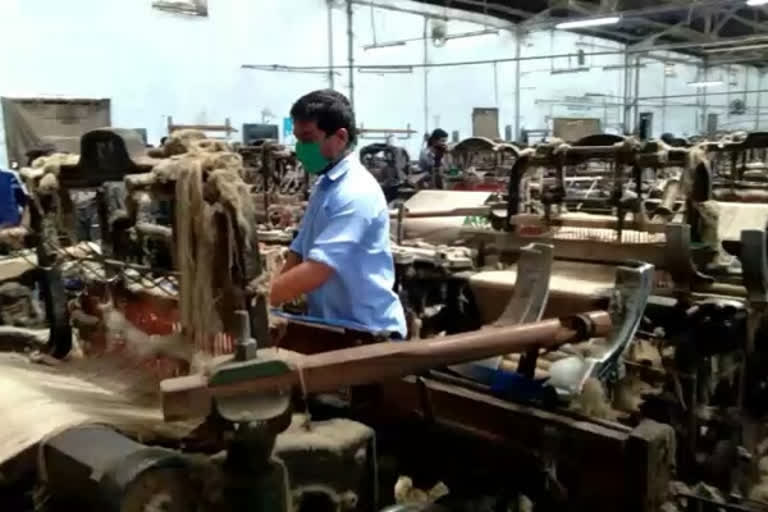Kolkata: With the state government allowing 100 percent attendance in factories since beginning of the June, manufacturing units related to hosiery and real estate are running to their capacity, but those dealing with jute and transport sectors are battling labour shortage due to absence of migrant labourers.
Sources in the jute industry said that many jute mills are operating at 60-70 per cent capacity in the absence of migrants, who used to constitute bulk of the workforce. Migrant workers, many of whom returned to their home in the neighbouring states of Bihar and Jharkhand during lockdown, are yet to arrive back to the work they had vacated.
West Bengal is the largest producer of jute in the country and the sector is considered as mainstay of the state's economy. This is posing a major challenge for the jute mills to meet the huge demand for jute packaging material from the government during the kharif season. A section of the jute mill owners said that they are sending buses to Bihar and other states to bring back their workers, who went back home during lockdown.
"Some mills on their own are deploying buses to bring back workers who had returned home during the lockdown," former Indian Jute Mills Association chairman and owner of a few mills, Sanjay Kajaria, told reporters.
Also read: Flight of labourers during pandemic hampering Bengal jute mills functioning
The need for jute workers from outside is important as local labour force lack training to substitute them.
"Demand from the government is huge, the Kharif order for jute packaging material is high which can be achieved only when the mills function with 100 percent workers," Kajaria said.
Transport is another sector in West Bengal whose work is hampered for want of labourers many of whom went back to their native places. Dhananjay Singh, president of a truckers body said, shortage of labourers in transport is still high as many of those who returned to their native places in Bihar and Jharkhand aren't willing to return out of fear of virus and also uncertainty of earning due to dwindling work order.
"Demand for cargo is very low. I am operating at 20 percent of my fleet capacity," he said.
Barring jute and transport, work in other sectors having minimal labour issue is running smoothly. Real estate players said they are not facing any problem of availability of construction workers as Bengal itself supplies bulk of them to other states.
Unlike construction workers shortage in Maharashtra, Kerala and Karnataka, we do not have any problem and in the next 15 days activities on sites will get traction, Credai Bengal president Nandu Belani said. Hosiery sector in Bengal employs most of their workers from nearby areas and so they have almost 90 per cent of the labour force in their factories.
"This sector doesn't engage migrant labourers, but we are deploying transport to bring back workers who had gone home in other districts and also offering them accommodation," Lux International director Udit Todi said.
Also read: Petrol, diesel price rise resume after a day
Though experiencing labour crunch, manufacturers of steel are not much bothered as demand for the product is not much as construction work in monsoon season is low. Shyam Steel Director Lalit Beriwala said, "a lot of their workers have gone back to their hometown from Durgapur-Asansol belt leaving back with 50 per cent of the workforce in their plants.
"But, since the demand for the product is not much due to low volume of construction work in the monsoon, it's not much of a problem. In this situation we don't foresee need to take any special efforts to bring back workers from their home towns in other states."
PTI




